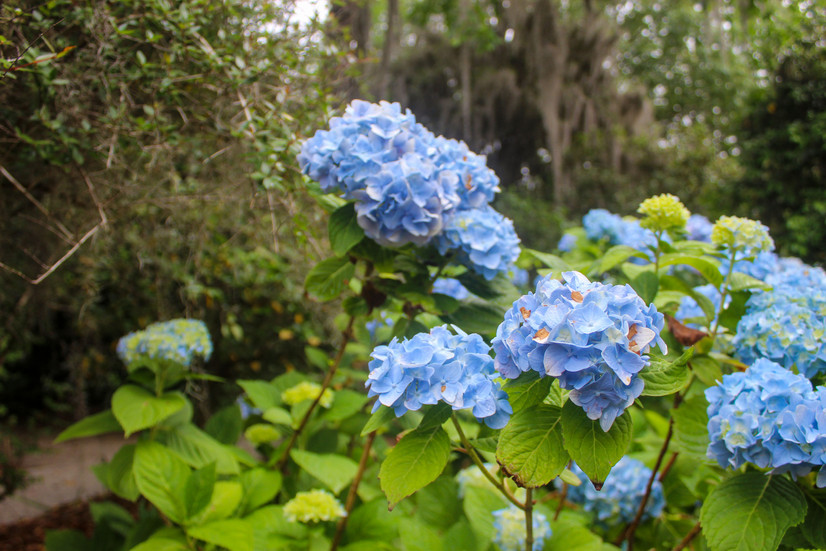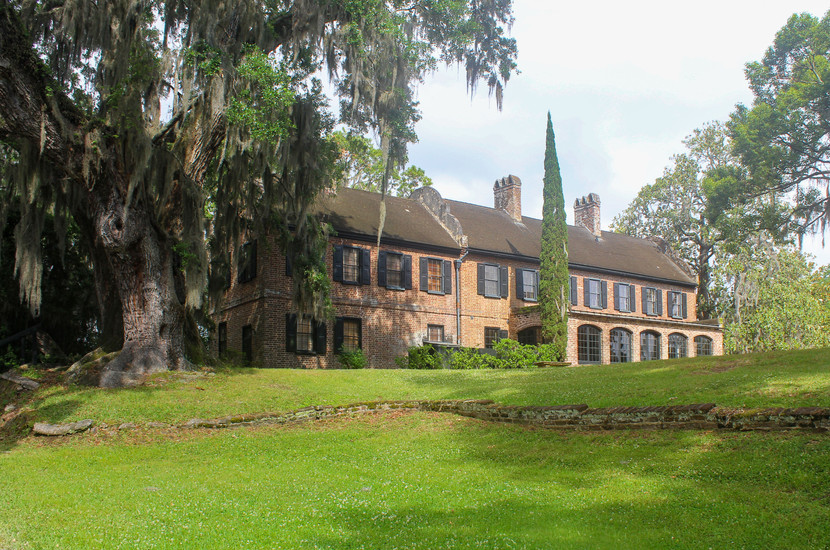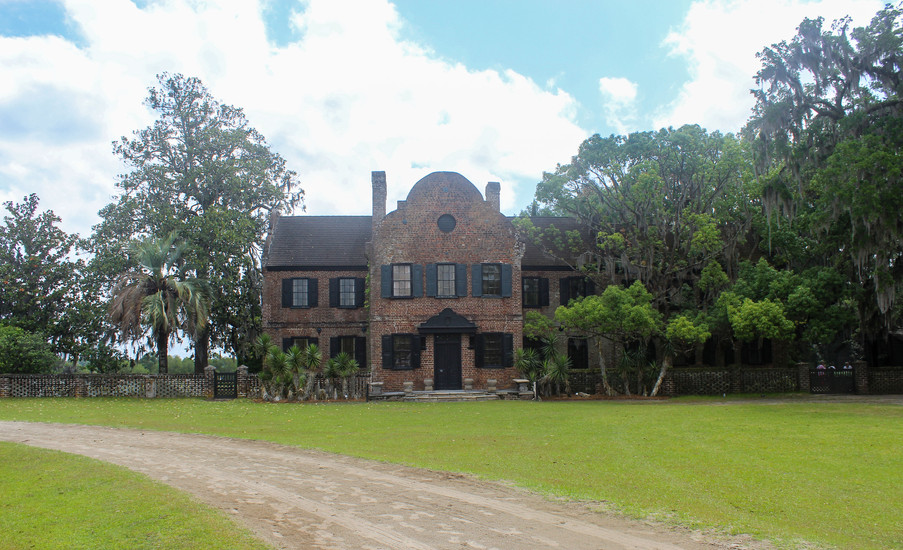Middleton Place
- Tim Murphy
- Jul 27
- 9 min read
Located within Charleston’s Ashley River Historic District, Middleton Place once served as the main residence for South Carolina’s prominent Middleton family, many of whom significantly influenced the state’s political and socioeconomic landscape. Although the main dwelling was destroyed during the American Civil War, the estate is renowned for preserving the nation’s oldest landscaped gardens. The south flanker—the property’s sole surviving eighteenth-century structure—now functions as a museum, offering insights into antebellum society through its diverse collection of artifacts and family heirlooms. As a former plantation, Middleton Place also confronts the harsh realities of slavery, foregrounding the narratives of enslaved individuals whose forced labor fundamentally sustained this illustrious estate.
The foundational elements of Middleton Place were laid during the late 1730s, when planter John Williams constructed a three-story, Jacobean-style brick house overlooking the Ashley River. In 1741, the residence and its 500-acre homestead were bestowed to Henry Middleton as part of his marriage dowry to Mary Williams. This strategic union, typical among the Lowcountry elite, further augmented Middleton’s already extensive landholdings—by time of his death in 1784, Henry had accumulated more than 50,000 acres and enslaved over 800 individuals across British North America. The estate, rechristened Middleton Place, quickly became the administrative center of the family’s plantation empire.

The Middleton family amassed their wealth through rice cultivation, a physically-demanding and time-consuming process accomplished through the exploitation of slave labor. Enslaved women planted rice fields between early March and mid-April, typically covering a half-acre daily. While most rice plantations utilized tidal rivers for irrigation, the Ashley River’s brackish water necessitated precise control through inland reservoirs.
Cultivation commenced with “Sprout Flow”—an initial flood lasting three to six days, designed to facilitate seed germination. This inundation was followed by controlled drainage, allowing sproutlings to take root. Once new shoots (pips) appeared, the fields underwent a second cycle of flooding and draining. Enslaved laborers subsequently tilled the fields to remove weeds and aerate the soil. After a painstaking six weeks, a final “Harvest Flow” was gradually introduced, thereby providing structural support for the maturing rice plants.
Rice crops were harvested between September and November. Enslaved workers used hand scythes to cut rice stalks just above ground level. Once reaped, the stalks were dried, gathered into sheaves, threshed, and fanned to separate rice from chaff. Finally, the grain was manually processed with a pestle and mortar to remove its inedible husks. The finished rice was barreled and transported to Charleston Harbor for export to domestic and international markets.

While integral to plantation management, Henry envisioned Middleton Place as a grand country residence—a tangible manifestation of his considerable power and status among the colonial elite. Shortly after his marriage to Mary, Henry began constructing a formal garden on the plantation. Its distinctive centerpieces were two “butterfly lakes” perfected partitioned by a central causeway and embellished by six tiered earthen terraces. In 1755, Middleton further improved his estate’s opulence by constructing two symmetrical dependencies (flankers) on the north and south ends of the main house. The North Flanker contained a library and conservatory, while the South Flanker held plantation offices and a gentlemen’s guest quarters. After Mary’s death in 1761, Henry bequeathed Middleton Place to his eldest son, Arthur.
Henry and Arthur Middleton were a politically ambitious father-son duo. Both served in the provincial House of Commons and received appointments as Justices of the Peace.
In the years following the French and Indian War, as Anglo-American tensions intensified, Henry Middleton distinguished himself as a leading adversary against British economic and taxation policies. He represented South Carolina at the First Continental Congress, which convened in Philadelphia from September 5 to October 26, 1774. Just four days before Congress’s adjournment, Middleton assumed the presidency of the delegation, succeeding Peyton Randolph, who departed due to sudden illness. As president, Middleton signed the “Declaration of Rights and Grievances”—a seminal document, addressed directly to King George III, that outlined the colonists’ dissatisfaction with Parliamentary statutes including taxation without representation, the presence of standing armies during peacetime, and restrictive trade policies. The Declaration also threatened a widespread boycott of British goods, should the government refuse to rescind the Intolerable (Coercive) Acts.
In May 1775, Henry Middleton returned to Philadelphia as South Carolina's delegate at the Second Continental Congress. He helped organize the Continental Army and approved the invasion of Canada; however, he opposed outright independence from Great Britain, preferring a more moderate route towards reconciliation. This conservative stance, combined with declining health, led to his resignation from Congress in February 1776.
Arthur Middleton succeeded his father’s vacancy in the Second Continental Congress, later signing the Declaration of Independence on August 2, 1776. An outspoken Patriot, Arthur espoused more radical views than his upper-class contemporaries. He maintained leadership roles in various revolutionary committees, organized raids on royal armories, and raised funds for the American cause. Arthur remained in Congress until October 1777 before returning to Charleston.
In March 1780, as British troops advanced on Charleston, Arthur helped coordinate the city's defenses. His father, Henry, however, maintained a staunchly conservative stance and soberly acknowledged an inevitable British victory. This grim premonition was realized on May 12, when Charleston capitulated to British forces after a destructive six-week siege. While Henry reaffirmed his allegiance to King George III, Arthur was arrested and subsequently imprisoned at Castillo de San Marcos in St. Augustine, Florida. A year later, Arthur regained his freedom during a prisoner exchange in Philadelphia, where he continued to serve the Second Continental Congress until November 1782.

The Middleton family experienced successive tragedies shortly after the Revolutionary War. Henry, the family patriarch, passed away on June 13, 1784, followed by Arthur’s premature death on January 1, 1787. Stewardship of Middleton Place devolved to Arthur’s son, also named Henry, who exuded strong political aspirations like his forefathers. His public career began with his election to the State House of Representatives in 1802. Eight years later, he was elected Governor of South Carolina, serving one term. During his gubernational tenure, Middleton successfully enacted legislation establishing free public schools and supported President James Madison's foreign policy initiatives, diligently bolstering South Carolina's militia and defenses in preparation for the War of 1812. In 1814, Middleton was elected to the U.S. House of Representatives, where he served two terms.
In April 1819, Henry hosted James Monroe at Middleton Place during the President’s "Tour of the South." The following year, Monroe appointed Middleton as Envoy Extraordinary and Minister Plenipotentiary to Russia, an esteemed diplomatic role he fulfilled for ten years.
Henry returned to Middleton Place in 1830 to manage his family's rice plantations. Beyond his responsibilities as a planter, Middleton was an avid horticulturalist. He significantly enriched his ancestral gardens with lush greenhouses and cultivated a diverse array of exotic plants, including Asiatic azaleas and crape myrtles. When Henry Middleton died on June 14, 1846, Middleton Place was inherited by his fifth son, Williams.
In December 1860, Williams signed South Carolina’s Ordinance of Secession, which formally declared the state’s withdrawal from the Union and effectively instigated the American Civil War. Although too aged for active military duty, Williams vigorously supported the rebel war effort and made substantial financial contributions through the purchase of Confederate bonds.

On February 22, 1865, just days after Charleston’s surrender to Union forces, a detachment of the 56th New York Volunteer Infantry Regiment ransacked Middleton Place, destroying heirlooms, furniture, and the family’s 10,000-volume library. Contemporary accounts also confirm the theft of livestock, including six water buffalo, which remarkably resurfaced in the Central Park Zoo several months later. In a final act of retribution, Union troops burned the estate. The main dwelling and north flanker were completely consumed by flames, while the south flanker escaped severe damage.
Williams Middleton faced significant financial hardship during the immediate postwar era due to his misguided investments in the Confederacy, loss of agricultural income, emancipation of his enslaved workforce, and widespread destruction of property. With monetary assistance from his sister, Eliza Middleton Fisher of Philadelphia, Williams gradually reclaimed his ancestral landholdings, including Middleton Place. He refurbished the south flanker to serve as the family’s primary residence. Williams’s efforts to rebuild continued until his death on August 23, 1883. Following his passing, Middleton Place transitioned to his widow, Susan Pringle Alston Middleton.
On August 31, 1886, the Great Charleston Earthquake—an estimated 7.3-magnitude tremor—rocked the Lowcountry. Many buildings sustained catastrophic damage, but miraculously, the south flanker survived the seismic activity. The charred brick ruins of the north flanker and main house, however, were completely reduced.
Following Susan’s death in early 1900, Middleton Place was inherited by her daughter, Lily. Although she never lived on the estate as an adult, Lily actively managed the property throughout her lifetime. Upon her passing in 1915, Lily bequeathed Middleton Place to her cousin, Charleston lawyer John Julius Pringle Smith.
John and his wife, Heningham, initially made Middleton Place their winter residence, embarking on a multi-year endeavor to restore its historic gardens. As part of this comprehensive revitalization, they commissioned New York architect Bancel LaFarge to construct a new stableyard complex—comprising barns, workshops, and cottages—with salvaged bricks from the ruined main house. After nearly a decade of dedicated work, the Smiths reopened the nation’s oldest surviving landscaped gardens to the public. In 1941, the Garden Club of America recognized Middleton Place as “the most interesting and important garden in the United States.”

Middleton Place remains one of the most compelling historical sites in South Carolina—an enduring example of the Lowcountry’s affluence, decline, and complicated legacy. Meticulously preserved by the Middleton Place Foundation, this National Historic Landmark features America’s oldest landscaped gardens, a genealogical research center, and a rich collection of historic artifacts. The site is a vignette of American history, juxtaposing the prominent Middleton family alongside thousands of enslaved African Americans. Through its comprehensive approach, Middleton Place actively confronts the intricate relationship between Southern aristocracy and the peculiar institution of slavery, providing a crucial framework for understanding the broader context of American history.
Middleton Place offers self-guided tours of its historic estate and picturesque gardens. First envisioned by Henry Middleton in 1741, the gardens exemplify the grand classic style prevalent in eighteenth-century European landscape architecture. This aesthetic, inspired by the principles of Andre le Notre—who designed the Gardens of Versailles—emphasizes symmetry and geometrical balance while incorporating focal points and ornamentation.
The visitor experience begins at the garden’s Entry Portal, from which a magnificent series of manicured pathways unfold. The initial segments border the spring-fed Reflection Pool before transitioning into the Camellia Allées, an archway of flowering shrubs. The walkway winds through contemplative garden spaces and emerges near the Bosquet and Tomb, which inters several members of the Middleton family.
The walking tour proceeds through the Octagonal Sunken Garden and around the "Reine des Fleurs" (Queen of Flowers)—a collection of Camellia japonica specimens originally introduced by French botanist André Michaux in 1786. The main axis of Middleton Place features symmetrical rolling terraces that gradually descend to two butterfly lakes along the Ashley River—one of the estate’s most spectacular views. Directly behind this vista lie the ruins of the main house and north flanker.
The House Museum, located in the south flanker, contains an extraordinary collection of art, furniture, heirlooms, and personal affects spanning three centuries of Middleton ownership. The museum's two floors are arranged to evoke the main house's original eighteenth-century configuration. The first floor features a main entrance hall, parlor, dining room, and front hall. The second floor comprises a library, two bedrooms, and a children’s nursery. Collectively, these artifacts illuminate not only the immediate Middleton family, but also their extended social network, including close friends, associates, and African Americans—both enslaved and free—who lived and labored at Middleton Place.

West of the House Museum, the Stableyards showcase the "working life" of South Carolina's Lowcountry. This outdoor interpretive area features a variety of exhibits designed to demonstrate the daily activities of a historical plantation. Visitors can explore artisan shops and agricultural displays that depict the skills and practices essential to the region's economy. The Stableyards also maintain paddocks for heritage breed animals—including Cashmere Goats, Water Buffalo, Gulf Coast Sheep, and Guinea Hogs—offering a glimpse into livestock management practices prevalent during the period. Adjacent to the Stableyards stands Eliza’s House. Named after its last resident, Eliza Leach, this Reconstruction-Era freedman's dwelling houses the Beyond the Fields exhibits, a permanent installation that chronicles the institution of slavery at Middleton Place.
From Eliza’s House, the walking tour circles back towards the Ashley River, passing by the Springhouse (c. 1741) and the Mill Pond. The mill itself is located on the easternmost end of the property. Constructed by Williams Middleton in 1851, this structure served as a functional outbuilding and architectural enhancement to the gardens. It currently houses a small museum dedicated to rice cultivation within the South Carolina Lowcountry.
The pedestrian pathway continues across the property, leading visitors past a demonstration rice field and the ancient Middleton Oak, estimated to be 900-1000 years old. The path subsequently extends to Cypress Lake and the New Camellia Garden before completing its circuit at the Reflection Pool.
Middleton Place, with its astounding landscape architecture and historical interpretations, profoundly explores the economic and sociopolitical evolution of the South Carolina Lowcountry. It provides a unique opportunity to examine colonial-era aesthetic and horticultural practices, vividly illustrating the inherent tension between the burgeoning ideals of the American nation—liberty and self-governance—and harsh realities of plantation culture.
Visit Middleton Place for more information about tickets and tour prices
To learn more about Middleton's historically significant gardens, visit American Aristocracy, Cochran Writing, Enchanted Garden Design, South Carolina Plantations, and Feathering My Empty Nest
For more genealogical history about the Middletons, check out South Carolina Encyclopedia, Constituting America, the National Park Service, Carolana, and Descendants of the Signers of the Declaration of Independence
Refer to the following print resources for more history:
Doyle, Barbara., Sullivan, Mary Edna., Todd, Tracey. Beyond the Fields: Slavery at Middleton Place. United States: Middleton Place Foundation, 2008.
Duell, Charles., Helmer, Lee. Middleton Place: A Phoenix Still Rising. United States: University of South Carolina Press, 2012.
Hunt, Judith Lee. Beyond the Power of Fortune: The Middleton Family, 1784 to 1877. University of Florida, 2005.































































